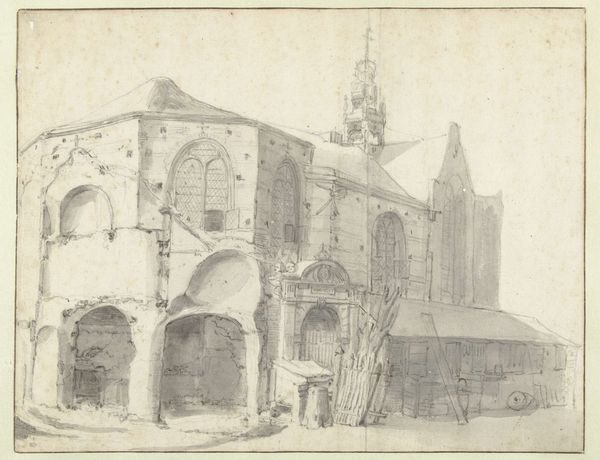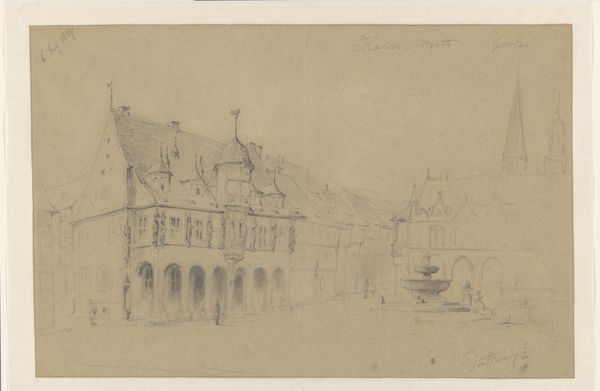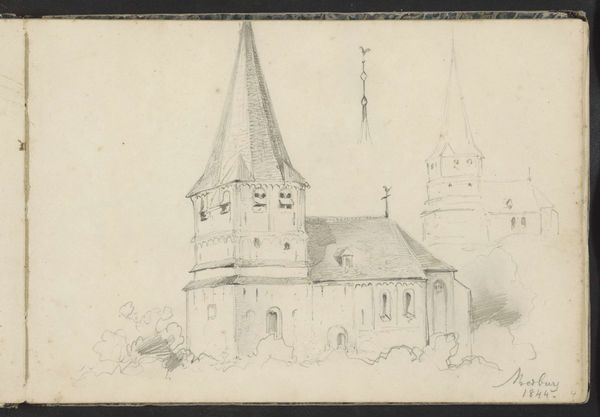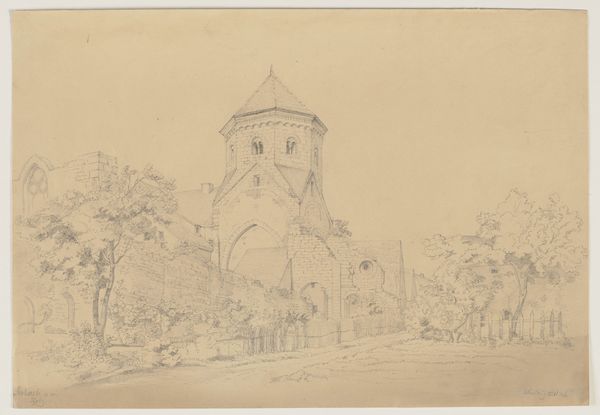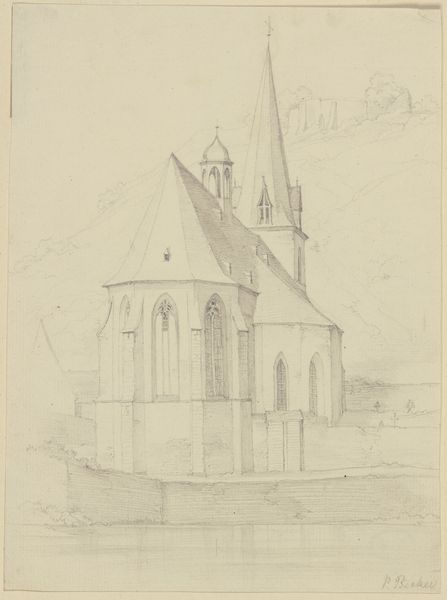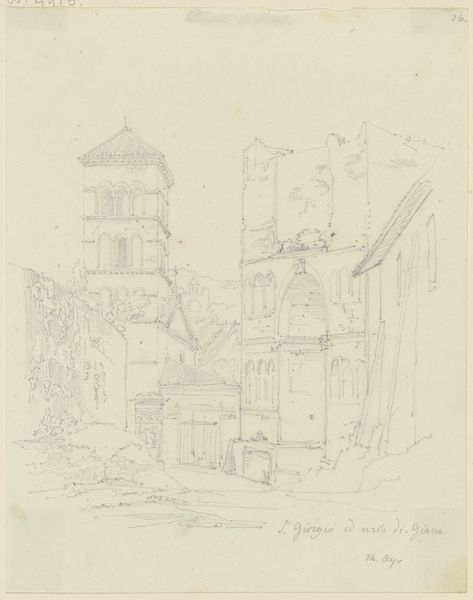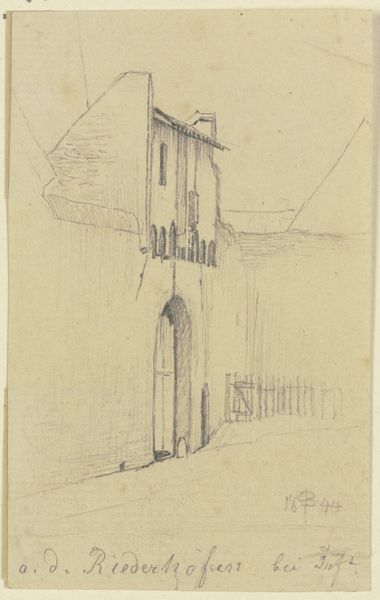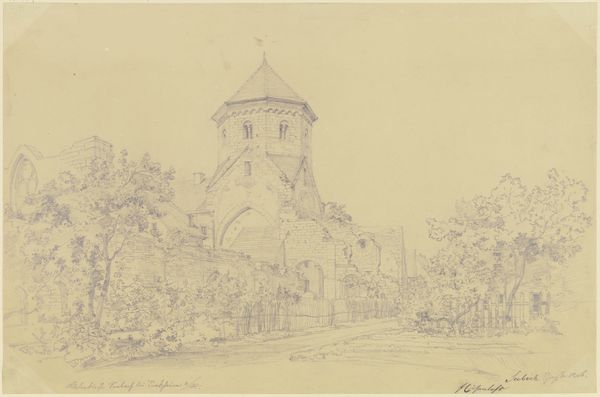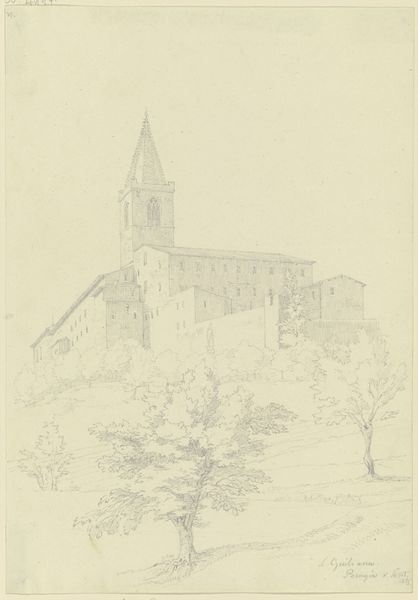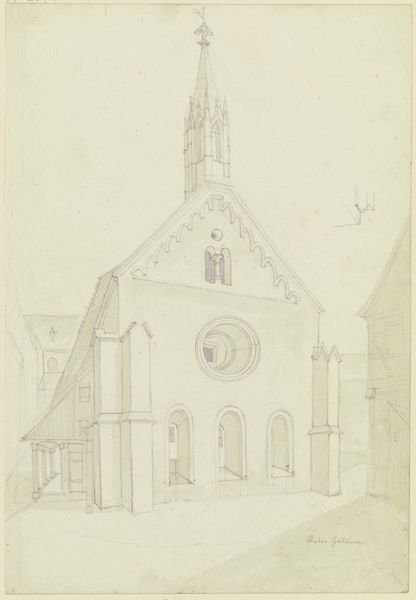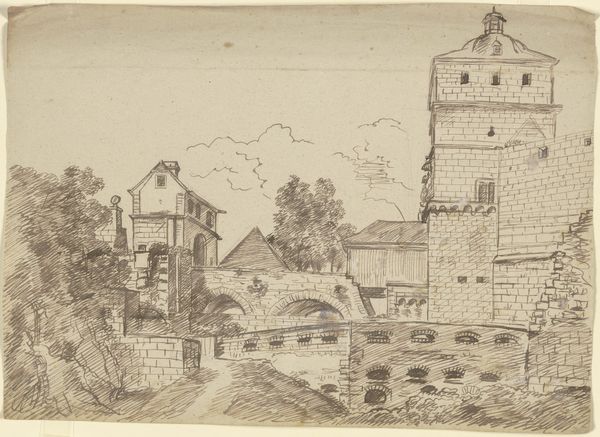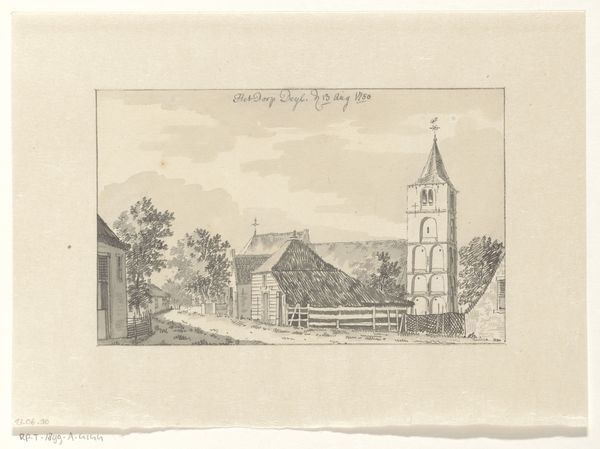
Copyright: Public Domain
Editor: So, this is Friedrich Wilhelm Ludwig's "St Paul's Church in Worms," created as a drawing on paper with pencil in 1848. I'm struck by its sort of faded grandeur – the way the delicate lines hint at this imposing structure. What captures your eye in this piece? Curator: Faded grandeur is perfect. It’s like witnessing a memory, isn’t it? I am particularly drawn to the way Ludwig captures light. Look at how the pencil strokes suggest texture – the rough stone of the church walls practically begs to be touched! I see a kind of quiet reverence, too. Makes you wonder, doesn’t it, what was going through his head as he sat there sketching? Were these romantic ruins or an enduring symbol? Editor: That's beautiful—seeing it as a tangible memory. I didn't really catch how evocative it can be on an emotional level. But also…is there a commentary on the temporary versus the eternal in here, with the Romantic landscape style being applied to this architectural study? Curator: Oh, absolutely! That's a brilliant observation. Romanticism, with its focus on the sublime and the power of nature, is an interesting lens through which to view a man-made structure, especially a religious one. Perhaps it speaks to the church's resilience or suggests that even the grandest human creations are subject to the whims of time, just like any natural landscape. It begs the question if the artist might see it that way. Editor: That interplay is much more nuanced than I had first appreciated. Thanks! It gives the work another dimension, realizing this piece is not *just* about showing a Church. Curator: Indeed! That interplay, for me, gives art its zing!
Comments
No comments
Be the first to comment and join the conversation on the ultimate creative platform.
